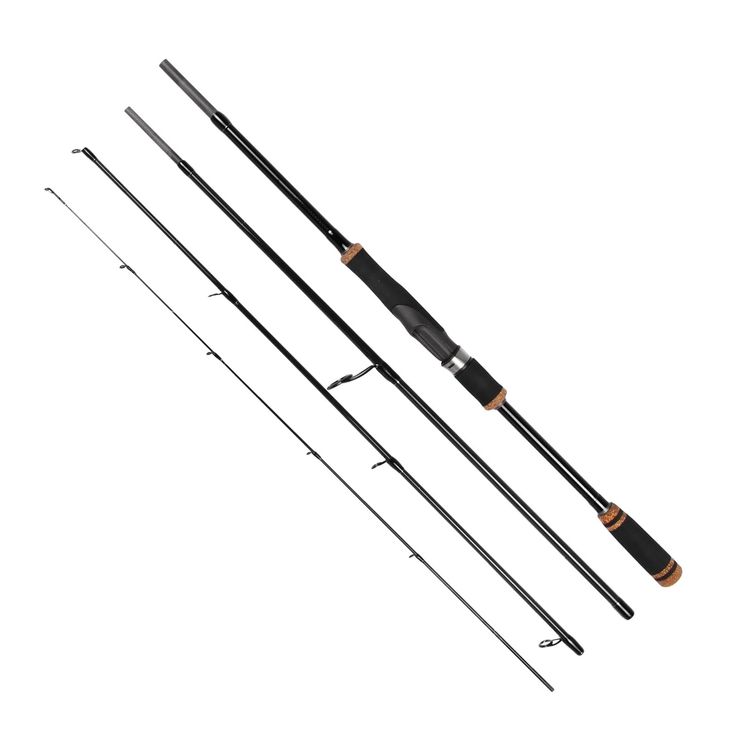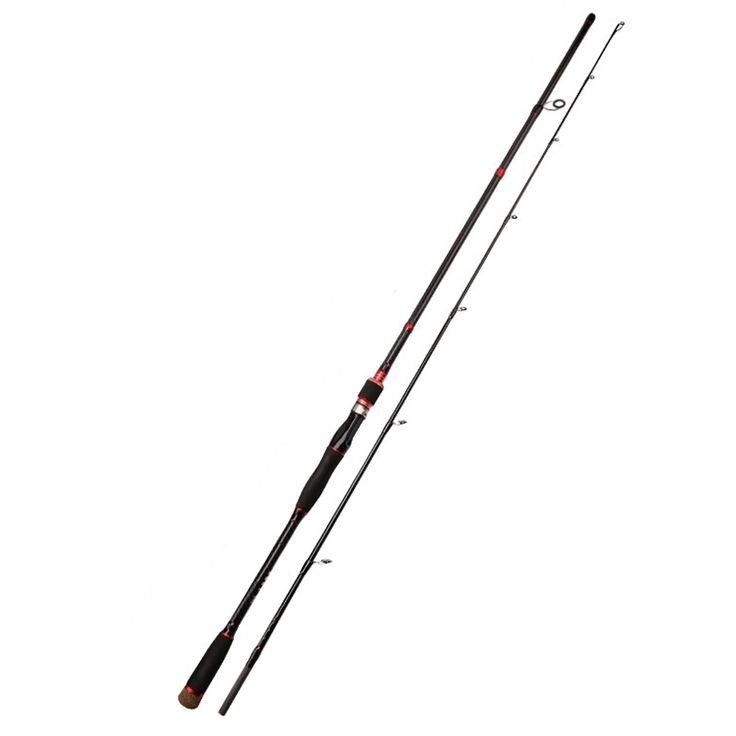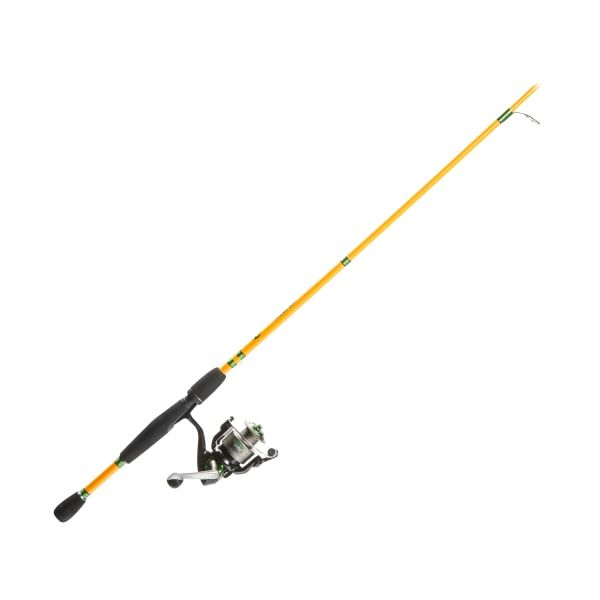Introduction to Bass Fishing Rod Selection
What size rod for bass fishing? Selecting the right bass fishing rod is absolutely crucial for achieving success on the water. The choice of rod size not only impacts your technique efficiency but also your overall comfort while fishing for bass. This comprehensive introduction will guide you through several key considerations that are essential when choosing a rod for various bass fishing scenarios. Whether you are a competitive tournament angler or a casual weekend fisherman, understanding these basics will significantly enhance your fishing experience. We will delve into the importance of rod length, material, and action, all tailored specifically to meet your unique fishing needs and the situations you may encounter. By familiarizing yourself with these aspects, you can make an informed decision and improve your chances of landing that trophy bass.

Elements to Consider When Choosing a Rod Size
When you’re choosing a bass fishing rod, several critical elements come into play. These factors can influence your success, comfort, and the overall enjoyment of the fishing experience. Let’s delve into the main elements to consider:
Rod Material
The rod’s material will affect its weight, sensitivity, and durability. Graphite rods are lightweight, highly sensitive, and strong, letting you feel even the slightest nibble. However, they can be pricier. Fiberglass rods tend to be heavier and less sensitive but offer a sturdier build and usually come at a lower cost.
Action and Power
Rod action determines how much of the rod bends when pressure is applied. Fast action rods bend mostly near the tip, giving you better sensitivity and faster hook sets. Power, on the other hand, refers to the rod’s resistance to bending. Be sure the power matches the size of the fish and the heaviness of the cover you’re targeting.
Handle Length
Don’t overlook the handle. It impacts your casting ability and comfort, especially during long fishing sessions. Longer handles help with casting distance and are great for two-handed casts. Short handles are better for quick, one-handed casts and precision.
Rod Length
Rod length can vary greatly and influences your casting distance and accuracy. Shorter rods offer better control for precise casting, while longer rods allow for longer casts and handle heavy baits better. Consider the fishing technique you’ll use, as well as the cover and structure you’ll be fishing around.
The Environment
Assess the waters you’ll be fishing in. Open water allows for longer casts and longer rods. In contrast, fishing in tight spots with plenty of cover requires a shorter rod for better maneuverability and control.
Remember, choosing the right rod for bass fishing is not just about personal preference. It’s about matching the rod to the fishing conditions, the techniques you plan to use, and the type of bass you’re targeting. Take these elements into account to enhance your fishing game.
The Impact of Rod Length on Casting and Control
Rod length plays a crucial role in bass fishing, significantly influencing both casting distance and control. Short rods, typically ranging from 5 to 6 feet, provide anglers with enhanced control and precision. These rods are particularly advantageous in tight spots, such as among heavy cover or dense vegetation. The shorter length allows for more accurate casting, enabling anglers to place their lures exactly where they want them. This precision is essential when targeting specific areas where fish are likely to hide, enhancing the chances of a successful catch.
In contrast, longer rods, often exceeding 7 feet, excel at boosting casting distance. They are ideally suited for open waters, where long casts become essential for reaching fish that are far from the shore. Longer rods not only allow anglers to make these extended casts but also handle heavier lures and baits more effectively. Techniques that require deep water crankbaits or other long-distance methods benefit significantly from the leverage and reach provided by longer rods.
Ultimately, the choice between short and long rods significantly impacts fishing efficiency and success. Selecting the appropriate rod length enables anglers to adapt to varying fishing conditions and techniques, allowing for a more enjoyable and productive bass fishing experience.
Ideal Rod Sizes for Various Bass Fishing Techniques
Selecting the ideal rod size varies based on the bass fishing technique employed. Each technique demands specific rod features to optimize performance. Here we explore the best rod sizes for common techniques.
Light Lure Finesse Fishing
For light lure finesse fishing, a shorter rod is generally preferable. Rods typically range from 6 to 7 feet. This size enhances control and sensitivity, crucial for detecting subtle bites. The moderate action of these rods aids in accurate casting and effective manipulation of light lures like drop shots or small jigs.
Medium Lure Applications: Spinners and Cranks
When using medium-sized lures like spinners and crankbaits, a longer rod helps. Suitable rods are often between 7 and 8 feet. These rods improve casting distance and leverage, important for these active recovery lures. The slightly heavier application calls for medium to medium-heavy power to handle the lure’s weight and resistance during retrieval.
Jerkbait Specifics and Rod Length
Jerkbait fishing requires precision, making rod choice critical. A 6.5 to 7-foot rod is ideal. These rods should have fast to very fast action, allowing anglers to execute sharp, precise movements. This action also helps with the jerk and pause method, crucial for stimulating strikes from cautious bass.
Swimbaits and Deep Diving Crankbaits
For swimbaits and deep diving crankbaits, go longer. Rods around 7.5 to 8 feet are preferred. These lengthier rods aid in making long, sweeping casts necessary for these techniques. They also have the necessary power to manage the heavy lures and maintain control during deep water retrieval.
Choosing the right rod size for specific bass fishing techniques can significantly influence your success rate. Proper rod selection ensures optimal lure presentation and enhances overall fishing efficiency.
Advantages of Long Rods for Specific Bass Fishing Scenarios
Long rods bring key benefits to certain bass fishing scenarios. They enhance casting distance and boost leverage when battling a bass. Long rods excel in open water or when you need to pull fish from heavy cover. Here’s how they assist in two specific tactics.
Topwater Frogs and Heavy Cover Tactics
Topwater frog fishing demands precise control and powerful hook sets. Long rods, typically around 7 to 8 feet, provide that. They offer better leverage to work the frog properly and haul big bass out of thick cover. Longer rods also help cast frogs far onto lily pads or over mats. This gets your lure to where the bass are hiding.
Deep Water Tactics and Long-Distance Casting
Deep water bass fishing often requires long casts. With a long rod, you can cover more water and let deep-diving crankbaits reach their maximum depth. Rods that are 7.5 to 8 feet long are ideal for these tactics. They support the use of heavy lures and maintain control during long-distance retrieves.
Summary and Recommendations for Bass Anglers
In conclusion, the right bass fishing rod size is key to your success. Long rods, spanning 7 to 8 feet, are great for distance casts and battling in heavy cover. They shine in topwater tactics and deep water scenarios. On the flip side, shorter rods, in the 6 to 7 feet range, offer precision. They’re ideal for finesse techniques and ensure sensitivity for light lures.
When choosing your rod, consider the environment, technique, and the bass you target. Graphite rods deliver sensitivity and are lightweight. They suit anglers who desire a quick bite detection. Fiberglass is tougher and can handle more stress, even if less sensitive. For action, fast rods with some flex at the tip work best for quick movements, essential for jerkbaits. A rod’s power should match the weight of lures and the size of expected catch.
Handle length is important for casting style and comfort. Long handles help with two-handed casts for distance. Short handles suit rapid, one-handed casts for accuracy.
To maximize your bass fishing results, tailor your rod selection to your specific needs. This strategic choice not only enhances your fishing experience but increases your chances of a rewarding catch. Select wisely, and tight lines!

